The next day of our journey, after a big walk and a boat tour around Copenhagen, we still had one thing left to do here: visit the Visit Carlsberg center. It is a museum/tourist shop at the old Carlsberg breweries. We didn’t have much time for the museum, but we wanted to pick some authentic beers as gifts.
So we walked from the hotel to Visit Carlsberg, again, not bothering with any public transport. This might not have been the best idea, actually, as it’s a long walk and we were lugging our suitcases behind us again. Visit Carlsberg is located on the street named Gamle Carlsberg Vej (Dan. Old Carsberg Road), in a part of the city named Valby. We walked there mostly along the big Vesterbrogade street, through nice but not particularly noteworthy neighboorhoods.
Carlsberg actually is pretty huge. It’s one of the biggest brewing companies in the world. Apart from Carlsberg itself, they own Tuborg, Kronenbourg, and Somersby brands, and in Russia in particular, they own Baltika Brewery, which has 38% market share in Russia. I’m not sure if the original brewery at Valby still actually produces anything of significance, but anyway, it is also pretty large, taking up several city blocks, with streets with names like Pasteursvej.
Fun fact: when Niels Bohr, a great Danish physicist, won the Nobel Prize in 1922, Carlsberg gave him a gift: a house right next to the brewery, with a free direct beer tap.
Sweden '15. X: Copenhagen (Part 2)
Published on:
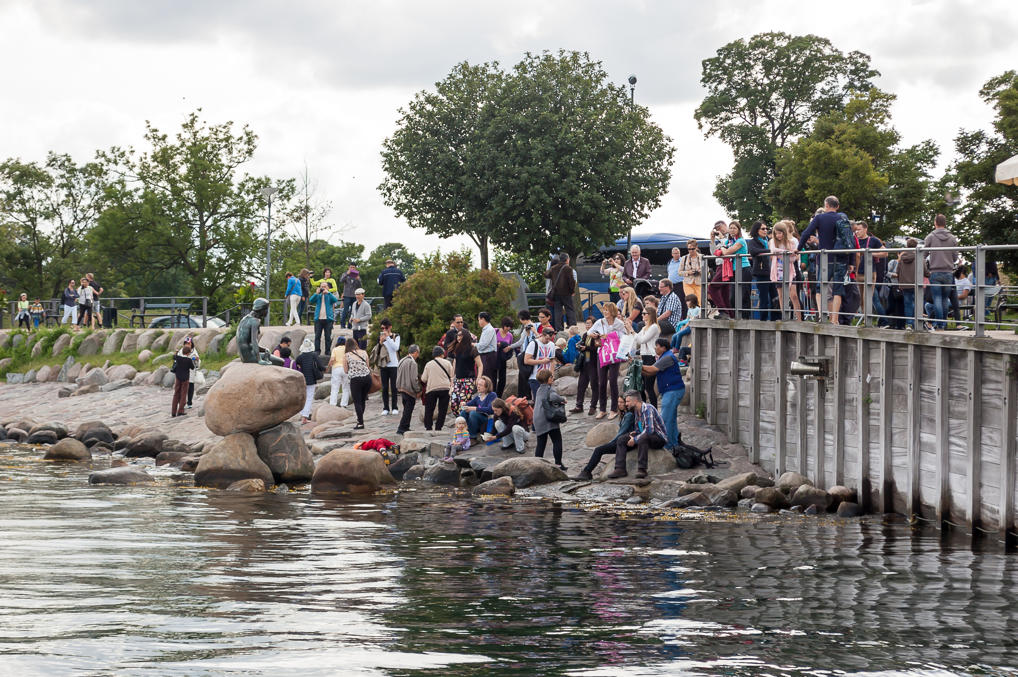
1. So that’s it. The biggest sight of Copenhagen. The Little Mermaid. Yeah. It’s pretty little alright. The statue was commissioned in 1913 by Carl Jacobsen, son of the founder of Carlsberg brewery, which is a pretty big Copenhagen enterprise (we’ll visit Carlsberg in the next part). He just was a fan of Little Mermaid ballet. The statue, located at the shore of the main channel quite far from city center, was damaged and restored many times. Tourist crowds milling around are annoying, but the statue is really very beautiful and heartful.
2015. Places visited
Published on:
2015 was a great year for me. It was pretty good overall, but it was a particularly fruitful year for trips. I bought myself a new car, a nice, boring, reliable Renault Sandero, and pretty much for the first time felt like I really could go absolutely wherever I wish. Moreover, my financial matters improved a lot, so I could really afford a good bit of travel, even if most of it was limited to weekends.
So, these are all places, towns and the like, where I’ve been to in 2015, sorted by location. Very few of them are currently documented here in this blog, although I’m trying to improve. St. Petersburg (where I live), its suburbs, Yekaterinburg (where my parents live) are excluded from this list for obvious reasons.
Finland
Finland is my favorite country by far. I like Finnish mentality, I like that it’s just round the corner from St. Petersburg, and I like that it’s boring in a good way. I always enjoyed exploring unremarkable places and finding their local minor places of interest and reading various trivia about them, and Finland is just perfect for that. However, I also visited Finnish Lapland, which turned out to be a stunningly beautiful place.
Kymenlaakso Region
Kymenlaakso means Kymi Valley, Kymi being the largest river in the southeasternmost Finland.
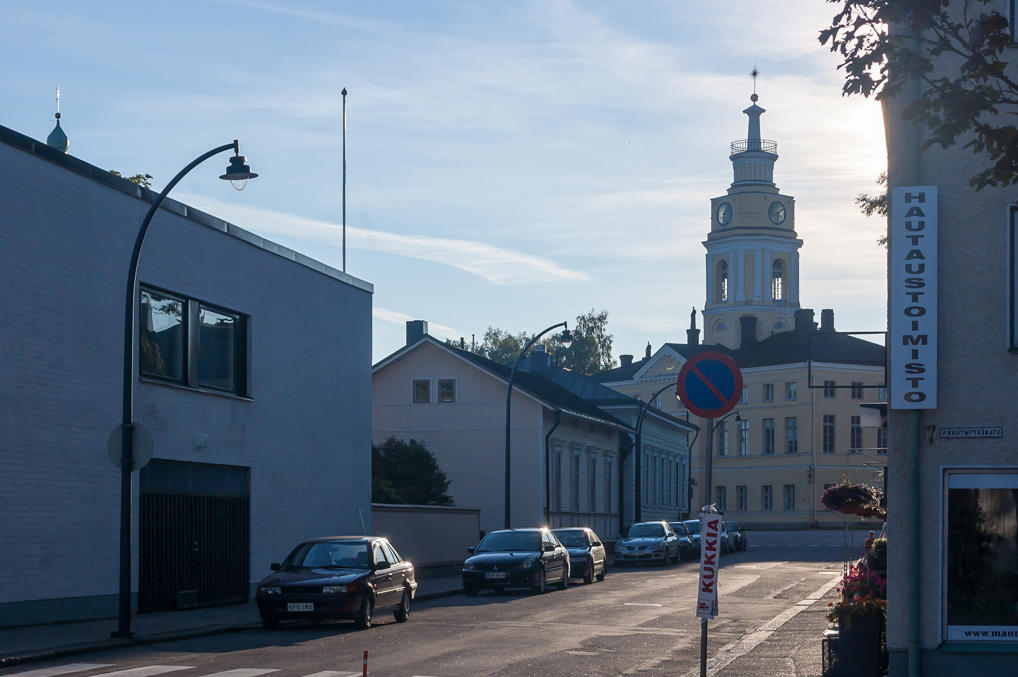
1. Hamina (Finn. Harbour): a small but quite interesting town. If Vyborg is a Finnish town that ended up on Russian territory, then Hamina is a Russian town that ended up a part of Finland. Lots of Russian Empire-era buildings and other artifacts. Cool fortress-like octagonal city plan. Very nice town overall.
Sweden '15. IX: Copenhagen (Part 1)
Published on:
During the last year or two, I have gradually come to realize I’m not really a big fan of visiting big cities. Note that it is specifically visiting that I dislike; I’m perfectly fine with big cities in general. After all, I happen to live in one. It’s just that it feels like a day or two, or a week, or even a month cannot really do justice to a city like Stockholm or Copenhagen. And too brief an impression can be worse than none, leaving you unsatisfied.
Nonetheless, Copenhagen was the one new big city we visited in this trip, and I must say it was pretty good. It’s nearly as good as Stockholm, and Stockholm only wins because it feels "more Scandinavian" and has cool location on the archipelago. Copenhagen’s layout is more like St. Petersburg, flat with a single big waterway, many minor channels, and no real seafront.
We woke up in our hotel named Cabinn Scandinavia in the part of city named Frederiksberg, a quiet old neighborhood to the west from the city center, technically considered a separate municipality from the rest of Copenhagen. After we got up and stuff, we just walked in the direction of the center.
I won’t write a Copenhagen history essay here. A merchant and fishing town existed here since 11th century; the name literally means "Merchant Harbor". Absalon, Bishop of Roskilde and a great figure in early Danish history built the first castle in what would become Copenhagen in 1186. Roskilde was Denmark’s old capital, and it was only in 1416 when Eric of Pomerania moved the capital of Denmark (and of Kalmar Union) here. In the coming centuries it suffered plagues, fires, sieges, and a Nazi occupation, but, well, here it is, beautiful and prosperous, population 580,000 Copenhagen proper, and about 2 million metropolitan area (35% of entire Denmark population).
After visiting Borgholm castle ruins, we’re driving on to the north on the island of Öland, 70 km more on a narrow road through peaceful resort villages.
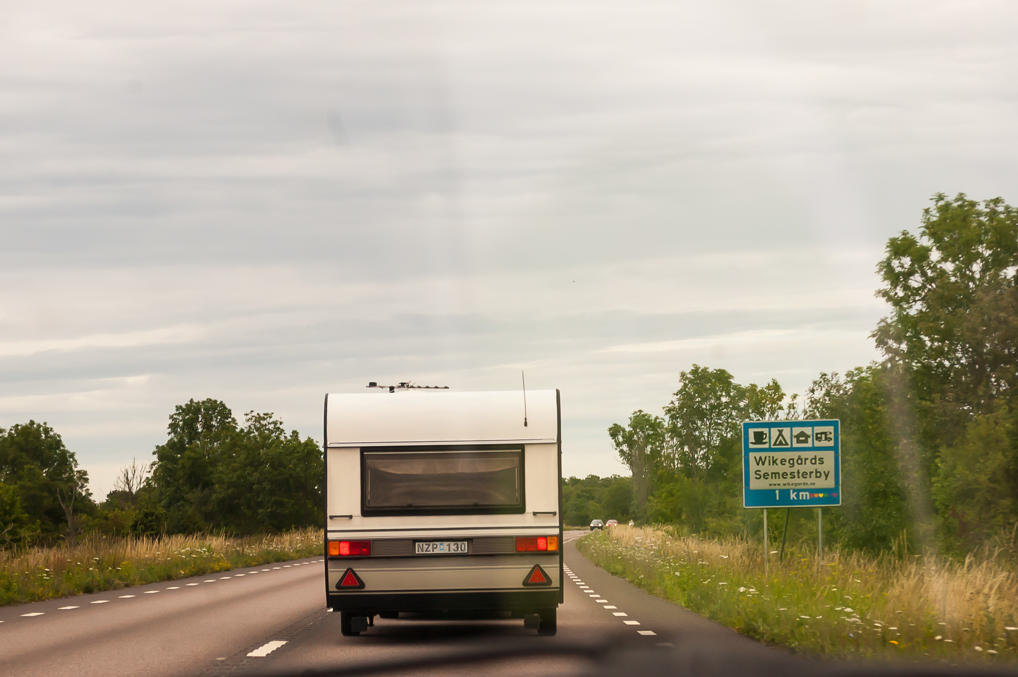
1. Långe Erik (Swed. Tall Erik) lighthouse is open for visitors but closes at 16, and we left Borgholm at 14:30. Normally that would be plenty of time to cover 70 kilometers, but congested road made it difficult.
Sweden '15. VII: Isle of Öland: Borgholm castle
Published on:
The Castle of Borgholm was one of the sights we wanted to see on Öland. It is a ruin of an ancient castle, probably originally built in the 12th century, and rebuilt many times over. The purpose of the castle was quite simple: to defend the Strait of Kalmar, mostly from the Danes. Borgholm (Swed. Castle Island) saw most of its fighting in the Kalmar War of 1611-1613. The war was caused by the Swedes being unwilling to pay tolls to Denmark for ship passage through Öresund Strait (out of the Baltic Sea, basically), and attempting to establish new land trade routes far in the north, through Norway, which was a part of Denmark at the time. The Denmark had the upper hand in the war, but their victory was far from certain. In the end Denmark agreed to grant free passage to Swedish ships, and Sweden paid ransoms for castles conquered by Denmark, and renounced its claims to the Norway north. The castle of Borgholm in particular was conquered by the Danes, reconquered by the Swedes, reconquered by the Danes again, and then ransomed by the Swedes after the war, taking heavy damage in the process. After that, the castle took its modern shape, designed by architect Nicodemus Tessin the Elder, but fell into disuse soon, and was destroyed by a fire in 1806. The castle ruin remains a popular tourist destination. Like Vasa Ship Museum, we found the castle more interesting than we originally thought.
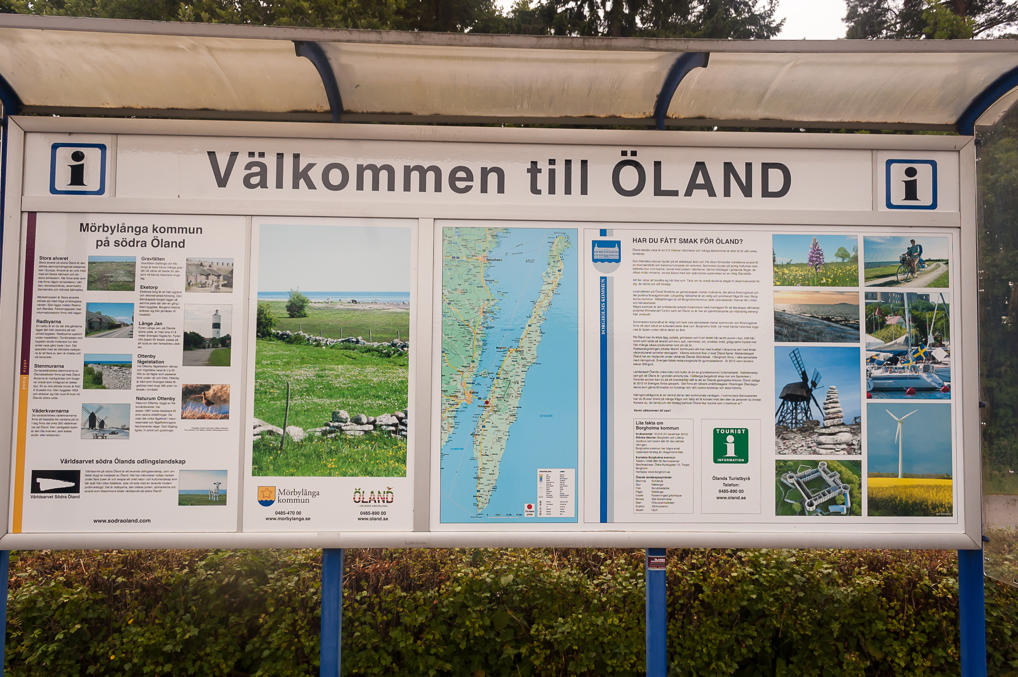
1. Tourist information board near the town of Färjestaden, Mörbylånga Municipality. It has a nice map of the island, narrow but stretched for 150 km from north to south. The town of Borgholm is the center of Öland, and the castle ruin is just outside the town. The drive from Öland Bridge to Borgholm is about 20 km.
Sweden '15. VI: Driving from Stockholm to Öland
Published on:
Our major destinations on this journey were Stockholm, isle of Öland, Copenhagen, Bohuslän, and Uppsala. So, Öland was going to be our first stop after Stockholm. Or actually the second one; we were going to drive 300 km, then stop overnight in a motel, and then drive the remaining 180 km or so. This map explains it:
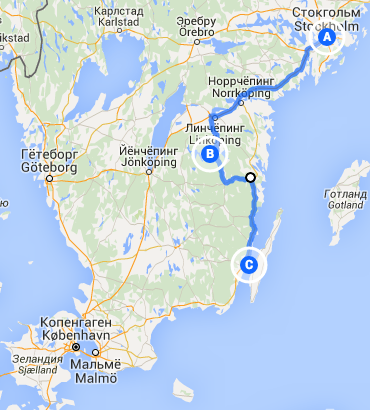
The motel, named Föllingen Hotell, is located in the village of Pinnarp, near the small town of Kisa, Kinda Municipality, Östergötland Län (län is Swedish traditional name for county). As you can see on the map, our route could be a mostly coastal one, along the E4 and E22 routes, but this motel was the cheapest accomodation we found more or less along the way, hence the inland detour.
So we set out from Vasa Museum on Djurgården, took a ferry to Skeppsholmen, walked through Gamla Stan (Old Town) and Riddarholmen to Kungsholmen, and then took a metro train back to where we left our car in the morning.

1. Djurgårdsbron (Swed. Djurgården Bridge) again.
Sweden '15. IV: Vasa Museum
Published on:
Vasa Ship Museum (Vasamuseet) is one of the best known museums of Djurgården. As its name suggests, it is basically built around one single exhibit: Vasa ship.
Some history is in order, now. Sweden in the 17th century was a major European power. At the peak of its growth, it ruled over territories which are now known as Finland, Estonia, Latvia, parts of Russian Republic of Karelia and Russian Leningrad Oblast, and some territories in Germany (Bremen-Verden) and Poland (Pomerania). During this period, Sweden also finalized its own borders, annexing Scania, Öland, Jämtland, and some other territories. Russia in particular had a lot of wars with Sweden in 17th and 18th centuries.
King Gustav II Adolf the Great ruled Sweden in 1611-1632, and he is now known as one of the greatest military commanders Sweden ever had; he is even considered "the father of modern warfare", and he was greatly admired by Napoleon himself. He was the one who recognized that the Swedish Navy had to be modernized in order to be competitive. At the time, boarding was considered to be how naval battles are won. Gustav Adolf however loved artillery, and ordered construction of new warships, heavily armed with cannons. Which turned out to be a really great idea, except for that minor Vasa mishap. Vasa was to be the first of these ships with two cannon decks, and to become the flagship of the Swedish Navy. Thus, it was laid down in 1626, at the shipyard on Blasieholmen (just off the Old Town of Stockholm, now built-up and connected to the mainland).
Vasa was to be a very impressive ship, 47.5 meters long with 64 cannons in total, and lots and lots of ornamentation. The thing is, the design had major stability problems. The ship was too tall and top-heavy with all those cannons, and not nearly wide enough. It pretty much was unable to sail.
Now, of course the engineers and shipwrights and even simple seamen watching the ship hull grow at the shipyard, had some idea that something was wrong. But laws of physics which apply to ships were not known at the time, and everything was done pretty much by rule of thumb. And if the king orders you to put more and more cannons on the ship, who are you to refuse him. In the end Vasa was launched in 1628 with no major changes to its design.
You could have guessed what happened next. Vasa set sail and actually managed to sail for about a kilometer, just until the first gust of wind. Which promptly capsized the ship. Which sank right in the harbor, in full view of pretty much the entire Stockholm watching the show, including the king. Quite an embarassment. Most of the crew escaped, but still, 30 people died in the shipwreck.
Sweden '15. III: Djurgården
Published on:
Stockholm, the capital of Sweden, is also the largest city of the Nordic countries overall, with population of 920,000 (2.2 million metropolitan area). It also happens to be my favorite (large) city in the world, so far (edit: as of 2018, I like Helsinki better). Last year, we visited Stockholm and explored its Old Town (Gamlastan), and some of its Norrmalm and Södermalm districts, so this time we chose something different, deciding to start with the island of Djurgården.
Djurgården (Swed. Game Park) is an island in the eastern part of Stockholm, home to many parks and museums, including Vasa Ship museum, Skansen open-air museum, Junibacken the museum of Astrid Lindgren, Gröna Lund the amusement park, and many others. Historically, it indeed used to be a Royal game park, which transformed to its present state towards the second half of the 19th century. There are bridges to Djurgården, and a very short ferry line connecting it to the Stockholm Old Town.
We arrived to Stockholm at 6:30 local time, which is way too early for pretty much anything, and decided to drive to Djurgården and walk around for a while until some museum opens. We had plans for Skansen and Vasa Ship museum, but ended up visiting only the latter.

1. Leaving the Viking Line ferry terminal.